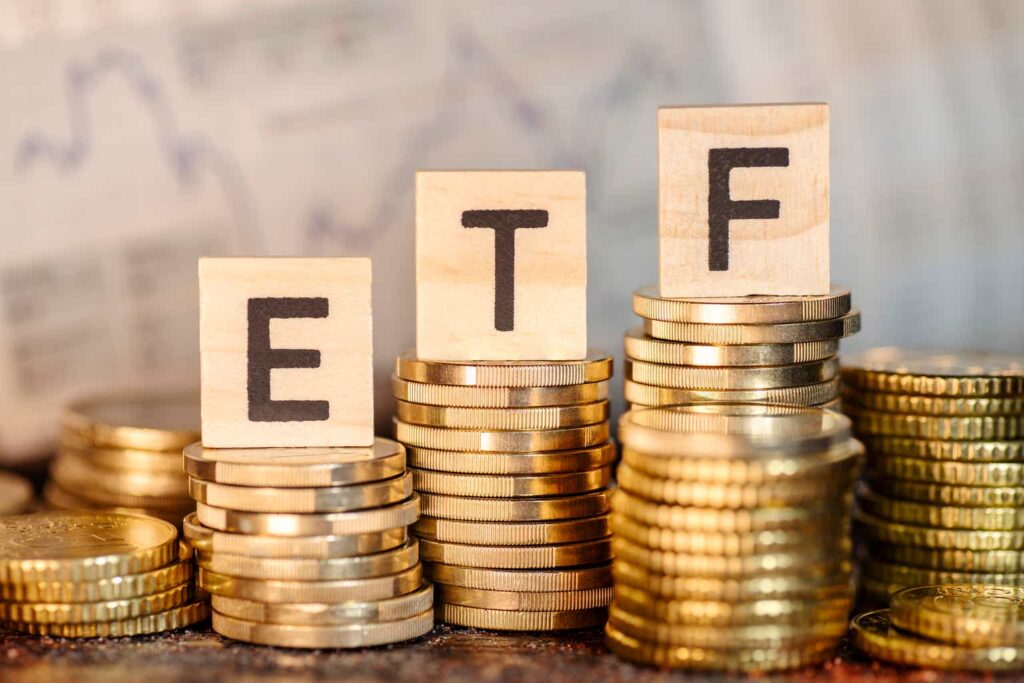Investing has become much more complicated over the last several years. While long-term objectives rarely change significantly in short periods of time, the economic environment has been very fluid since Covid-19 first hit in late 2019. With a recession occurring in 2020, prices increasing rapidly starting in early 2021, and now growing signs of another economic slowdown, allocating capital has become more difficult.
In this kind of market many investors are seeking more targeted investing strategies, and using ETFs has become more common. One of the more well-known exchange-traded funds is the WisdomTree U.S. Quality Dividend Growth Fund ETF (NASDAQ:DGRW).
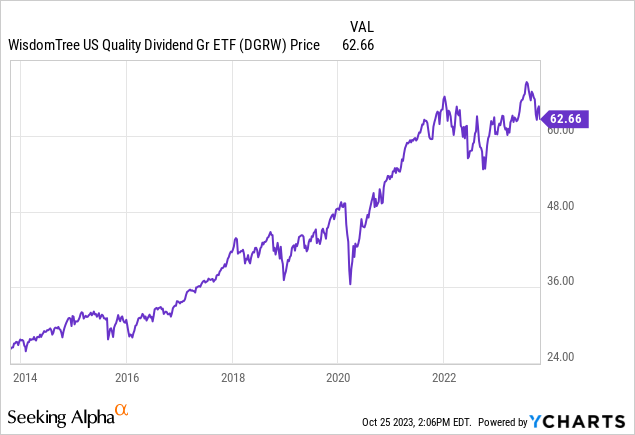
DGRW has offered investors a solid return of 192.85% over the last decade. Still, the fund has also performed nearly exactly in line with the S&P 500 (SPY) when comparing total returns since 2013.
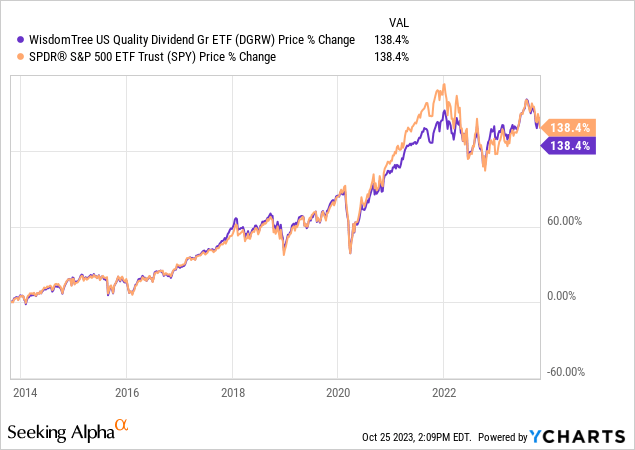
DGRW has offered investors good overall returns but minimal income despite failing to consistently beat the broader indexes.
Today, I am initiating my rating of the WisdomTree U.S. Quality Dividend Growth Fund ETF as a hold. This fund has performed well over the last decade primarily because of the ETF’s significantly overweight position in the technology sector, but the exchange-traded fund has very minimal exposure to sectors that outperform during inflationary periods like the one we are in. DGRW has minimal holdings in the energy and basic material sectors. This fund will also likely continue to offer disappointing dividends and income payouts because of the ETF’s heavy exposure to large-cap technology companies.
DGRW invests nearly exclusively in large-cap companies, and the fund has minimal diversification.
A chart showing sector allocation of DGRW (Seeking Alpha)
While this ETF has core holdings in six different sectors, the top ten holdings make up 36.4% of the fund’s assets.
A chart showing DGRW’s core holdings (Seeking Alpha)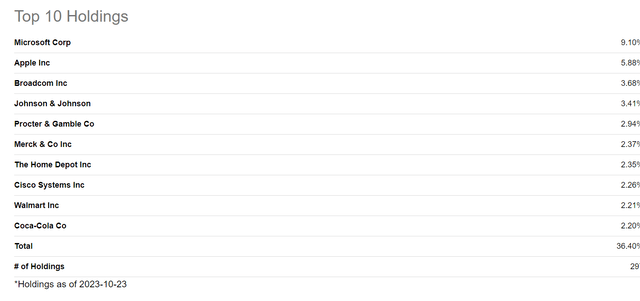
This WisdomTree fund has 22% of the ETF’s assets invested in 4 tech companies, with Microsoft (MSFT) by far the exchange-traded fund’s largest holding. DGRW’s overweight tech position is the primarily reason the fund has offered solid total returns over the last decade, but this ETF’s significant allocation to this sector is also why the fund has and will likely continue to offer minimal income. DGRW currently yields just 1.94%, and the fund’s dividend growth over the last three years has been just 7.17%.
This well-known exchange-traded fund is also significantly underweight the basic material and energy sectors even though these stocks tend to significantly outperform markets in inflationary times like we are in. Oil and commodity prices have risen significantly over the last three years, and energy companies have also raised dividend payouts much in the last two years as well. DGRW has just 1.81% of the fund’s assets allocated in the basic material sector, and the ETF has invested just .68% of the fund’s assets in the energy sector. The fund’s underweight position to these sectors is also a main reason why this ETF has paid only minimal income over the last several years. The current yield is well below the recently reported 3.7% rate of inflation in September.
DGRW has also been hurt by the recent rate cycle more than most funds since the fund invests nearly exclusively in large-cap companies, and this ETF has more exposure to the dollar than most exchange-traded funds. Large-cap tech companies get 58% of their revenues from outside of the United States, and small forex moves can make a notable difference in earnings. The dollar has been consistently rising against the Euro and most major currencies since August of this year. Predicting forex moves is always precarious, but the rising rate of inflation since August of this year will likely extend the current rate cycle the Fed is committed to. Powell has also stated his goal for inflation is 2%, a level well below the current rate of 3.7%.
A chart of the U.S. dollar (marketwatch)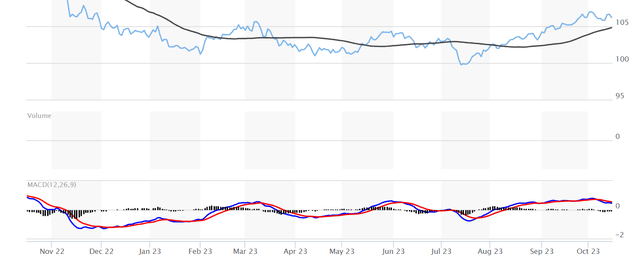
DGRW could possibly outperform the markets despite the fund’s minimal holdings in the energy and basic material sectors if inflation rates were to come down significantly and the Fed paused the current rate cycle, likely causing the dollar to fall, but this scenario remains less probable with the recent international conflict impacting oil markets. The Russia-Ukraine war will likely continue to impact energy markets for some time as well.
DGRW has been a solid investment for growth investors over the last decade, and the technology sector should continue to outperform the broader indexes over the long term, but this fund still has minimal exposure to key sectors that tend to outperform in the inflationary period we are in and that should remain for some time. This ETF will also likely continue to offer minimal income since most large-cap tech companies are focused more on capital investments than dividends and buybacks, so the fund won’t have much appeal to those seeking income. While DGRW should continue to have some value for growth investors, individuals looking to beat the S&P 500 and market indexes should also be able to find better value elsewhere as well.
Read the full article here


